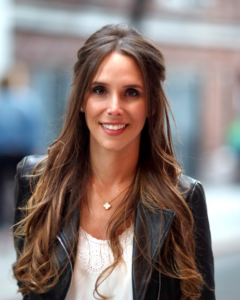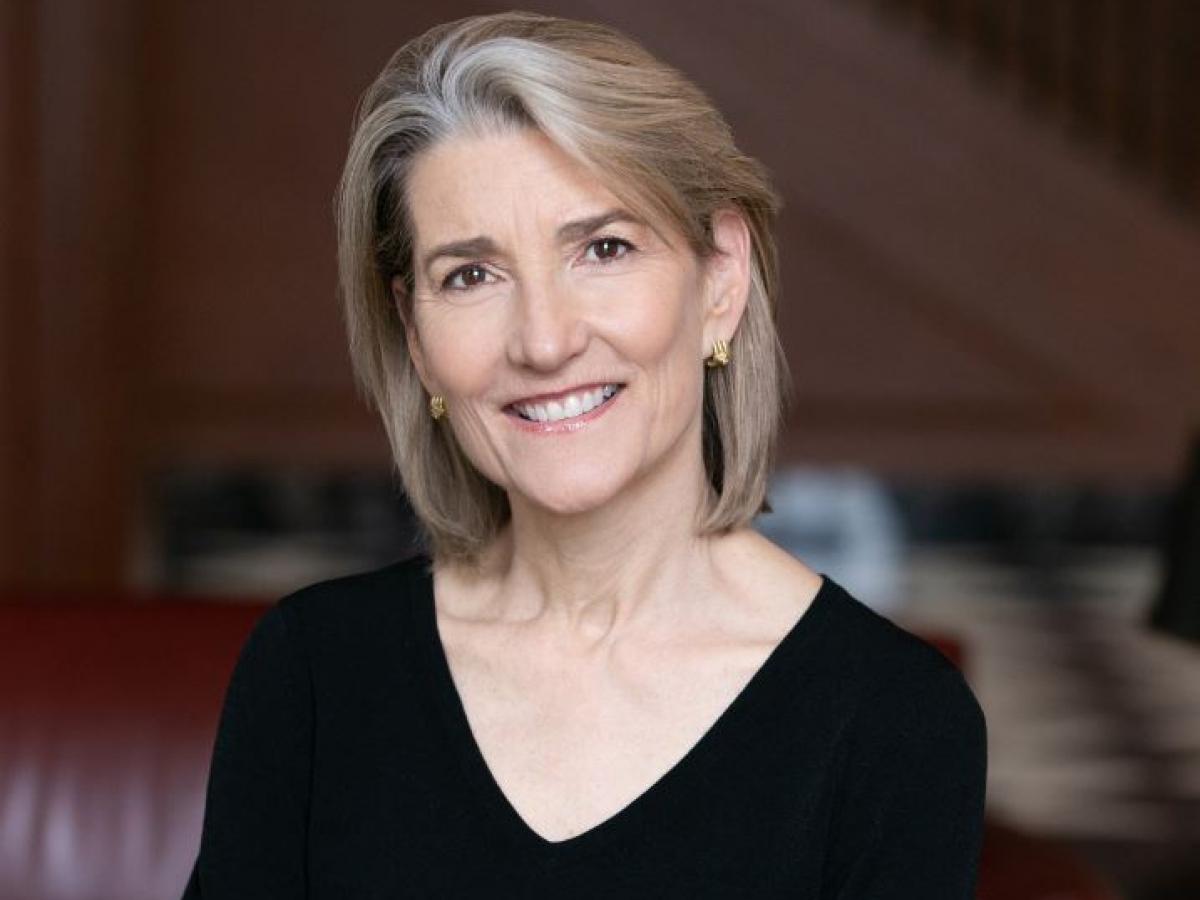
Harvard Leadership Professor, Dr. Amy Edmondson, Dives Into What Makes Teams High-Performing
September 5th, 2019 Posted by tp33 Podcasts 0 thoughts on “Harvard Leadership Professor, Dr. Amy Edmondson, Dives Into What Makes Teams High-Performing”Podcast: Play in new window | Download (Duration: 52:36 — 107.9MB) | Embed
Subscribe: Android | Google Podcasts | RSS | More
Dr. Amy Edmondson is a seven-time author who got her PhD in Organizational Behavior from Harvard, then went on to teach Leadership at Harvard Business School (for the past 23 years and counting) as the Novartis Professor of Leadership and Management, where she has tenure. In this episode, Amy discusses some of the groundbreaking principles she outlines in her book The Fearless Organization: Creating Psychological Safety in the Workplace for Learning, Innovation, and Growth and shares important pitfalls that eat away at having an empowering culture in the workplace.
Amy and Tanya talk about what leadership is, how people can gain access to it and what is absolutely mission critical for effective team collaboration and high-performing organizational cultures.
Tune in to get the full conversation and learn about:
-
-
- Leadership defined
- Leadership fundamentals
- The current state of leadership
- Leadership pitfalls
- What allows for high-performing teams
- Organizational high-performance cultures
- Psychological safety at work
- CEO bubble (leadership bubble) dangers
- The difference between management and leadership, and when to use each
- What makes a great leader
-
Dr. Amy Edmondson’s biography:
Amy C. Edmondson is the Novartis Professor of Leadership and Management at the Harvard Business School, a chair established to support the study of human interactions that lead to the creation of successful enterprises that contribute to the betterment of society.
Edmondson has been recognized by the biannual Thinkers50 global ranking of management thinkers in 2011, 2013, 2015 and 2017 and was honored with the Talent Award in 2017. She studies teaming, psychological safety, and leadership, and her articles have been published numerous academic and management outlets, including Administrative Science Quarterly, Academy of Management Journal, Harvard Business Review and California Management Review. Her books – Teaming: How organizations learn, innovate and compete in the knowledge economy (Jossey-Bass, 2012), Teaming to Innovate (Jossey-Bass, 2013) and Extreme Teaming (Emerald, 2017) – explore teamwork in dynamic organizational environments. In Building the future: Big teaming for audacious innovation (Berrett-Koehler, 2016), she examines the challenges and opportunities of teaming across industries to build smart cities. Her new book, The Fearless Organization: Creating Psychological Safety in the Workplace for Learning, Innovation and Growth (Wiley, 2018), offers a practical guide for organizations serious about success in the modern economy.
Before her academic career, she was Director of Research at Pecos River Learning Centers, where she worked on transformational change in large companies. In the early 1980s, she worked as Chief Engineer for architect/inventor Buckminster Fuller, and her book A Fuller Explanation: The Synergetic Geometry of R. Buckminster Fuller (Birkauser Boston, 1987) clarifies Fuller’s mathematical contributions for a non-technical audience. Edmondson received her PhD in organizational behavior, AM in psychology, and AB in engineering and design from Harvard University.
Connect with Dr. Amy Edmondson:
* * *
Full Transcription:
Amy Edmondson: I started out as an engineer and some of the projects that I was working on not surprisingly required lots of people to work together on teams to get things done, and lo and behold, it was not so easy.
Tanya: That’s Dr. Amy Edmondson, seven-time author who got her PhD in Organizational Behavior followed by a 23-year and counting teaching gig as the Novartis Professor of Leadership and Management at Harvard where she has tenure. Amy outlines groundbreaking principles in her book, The Fearless Organization: Creating Psychological Safety in the Workplace for Learning, Innovation, and Growth as well as giving brilliant TED talk which has been viewed by millions on leadership.
Amy Edmondson: As an engineer, you can think, well, there are right answers and wrong answers and it should just – the people part shouldn’t be a big determinant, right? Wrong. I found myself getting very interested in how people come together and particularly across boundaries of expertise and sometimes status and sometimes even organizations in the built environment where I was working. It’s often different organizations coming together. I got interested in these dynamics, and I got so interested that I went to work for a small consulting firm that helped organizations build good teams and including at the very top for strategy teams and so on. I was really hooked. I was really fascinated. I thought the work was really interesting, and the people were really interesting, and I just was learning so much.
After a while I realized, I’m kind of a fraud here. I don’t have any background in business. I don’t have any background in psychology. If I’m going to be – if I’m really going to be committed to this work, I probably should go back to school. I didn’t really know an awful lot about the different kinds of programs, but in my travels, I had met some people who said, “Oh, you got to do a PhD in Organizational Behavior. That’s what you need.” I said, “Oh, what’s that? Okay, sure.” I think at first, I was just being a little bit agreeable because I thought, there’s no way. There’s no way I’ll get in and on and on it goes, but I did.
Tanya: You went from engineer and what kind of engineer?
Amy Edmondson: I was a structural engineer so I was helping build things. Specially, usually, geodesic domes, but also, trusses and other things.
Tanya: What are geodesic domes? I’ve never heard that before.
Amy Edmondson: Oh, well. A geodesic dome, if you close your eyes and think about – if you’ve ever been to Montreal back in the – one of the more famous geodesic domes was built for the US pavilion in the World’s Fair back in the ‘60s. It’s still there today and now it’s – I think they call it Biodome.
Tanya: Yeah, the Biodome. I am from Montreal.
Amy Edmondson: Oh, oh, okay. It’s that beautiful structure, and its claim to fame is that it’s very, very efficient in terms of use of materials, and it’s incredibly strong. In fact, that building caught on fire in – I can’t remember exactly when, but the skin, the outer part of the structure, burned completely up, and then the dome was still there and still intact. Then they rebuilt it as this more museum facility. It’s an incredibly strong structure. It can withstand high winds and it can enclose a great deal of space without much material or time or cost really.
Tanya: Wow, I didn’t realize. I mean, in Montreal, especially – I remember going at the Biodome. Montreal is French. I remember going to the Biodome so many times when I was a kid.
Amy Edmondson: Wow, good.
Tanya: It was actually a very special thing. I had no idea that it had all these incredible structural attributes to it.
Amy Edmondson: Yeah, it’s very special. I worked for Buckminster Fuller who was the guy who invented the geodesic dome and who actually was one of the chief architects for that structure. He also had a younger architect working with him because he was in his late 70s at the time. I was not around or with him at that time, but as a kid I always loved the building also.
Tanya: Yeah. No, absolutely. Where did you grow up?
Amy Edmondson: I grew up in New York City.
Tanya: Oh, in New York City.
Amy Edmondson: Yeah.
Tanya: Oh, my god. Wow. It’s rare that [05:15]. I’ve been in New York City for 13 years. It’s rare that we meet a native New Yorker.
Amy Edmondson: It’s true. It’s true.
Tanya: Yeah, it’s a rare thing, but that’s amazing. You’ve been teaching at Harvard. You got your Organizational Behavior PhD. Then you began teaching afterwards immediate…
Amy Edmondson: Right. I joined the faculty in 1996. I finished my PhD and went on the market to look for a professorship job, an assistant professor job, and was lucky enough to get one. Lo and behold I’ve been there for 23 years ever since. I got promoted to associate professor then full professor with tenure, and I – I’ve been there a long time which sounds – to me, I’m astonished I could ever be in any job for that long, but it changes every year. It’s always different students, different courses, different – it’s been full of variety and learning.
Tanya: Which helps, and so what are some of your favorite courses that you really teach?
Amy Edmondson: I love teaching courses on teams and team work. Fundamentally, the overarching umbrella is leadership which is the force that allows us to swim upstream. It’s the force that allows us to do things that aren’t easy or that don’t come naturally. When I say us, I mean collectively as teams or institutions or organizations.
Tanya: Yeah. This is something that – we do a lot of work in – my day job is consulting and we specialize in leadership consulting.
Amy Edmondson: Oh, good.
Tanya: This is why I’m so interested in having this chat with you. When we’re working with our clients and not even just our clients, we see it everywhere, leadership is something that people want so desperately. They want to have access to, but it’s this elusive concept for many, right?
Amy Edmondson: Yes.
Tanya: I think Google has 1.2 billion definitions or…
Amy Edmondson: Wow.
Tanya: Just for that. It’s a huge topic, but yet everybody really wants to get access. What is, for you, leadership, and how do you see that?
Amy Edmondson: I’m interested in teams and teaming, and I’ll define teaming – I’m interested in these things not just in their own right, but because I think that’s how more and more of the work gets done today. Teaming means coordinating and communicating with people across boundaries of expertise and status and time. Sometimes distance, virtual teams, and being interdependent in getting something done. Some important work done. Everything I just said is incredibly unnatural. I mean, I don’t want to overstate the case, but it’s not enough to just say, ah yes, we need a team. We need to collaborate. It just doesn’t happen. Collaboration breaks down in a variety of ways. We misunderstand each other. We fail to get clear on the shared goal. We don’t understand each other’s language. We get into conflicts. I mean, there’s all sorts of human phenomena. Social psychological phenomena that make collaboration more challenging than it first appears.
To me, leadership is yes, elusive, but leadership is the force that helps us do it anyway. I think the fundamental job of leadership is to ensure a good process that we – if we’re in a team, making an important strategic decision for example. One voice at a time. We capture and dig into what we know. We go deeper. Good process and good climate, having the right culture or climate that makes it possible for people to speak up openly, to disagree actively, to solve problems together.
I think leadership is responsible for ensuring good process and creating a good climate for learning and problem solving, and neither one of those things happens automatically. They just don’t. We wish they did, right? We wish that oh – I just say, hey, let’s have a team. Let’s get something done and the rest will take care of itself. It doesn’t. One of my favorite definitions of leadership is the art of harnessing the efforts of others to achieve greatness. People have – and I think for the most part, really want to contribute. They want to contribute their ideas, their skills. They want to be part of something larger than themselves. It won’t happen if it’s just a free-for-all.
Tanya: Yeah, I know. Inherently, for sure people, every time whether it’s – whether I’m speaking with a waiter or an executive or an entrepreneur, it doesn’t matter. Across the board, when I say, what really lights you up? It’s contributing to something that’s bigger than themselves, always, no matter what it is. Whether it’s serving somebody at a restaurant and making their day better by perhaps some great food or it’s about having global impact through business. Having taken a deep look at leadership, what in your view is the current state of leadership?
Amy Edmondson: You mean in the world?
Tanya: Mm-hmm.
Amy Edmondson: This or both. It’s suboptimal. It’s funny because I talk a lot about a thing I call psychological safety which describes a climate where people do believe they can bring their full self to work. They can speak up with work-relevant ideas, questions, concerns, even mistakes. It hardly needs to be said, but it’s not the norm. In most organizations, I ask people all the time to think of a time when they held back on saying something that they believed could be important. They weren’t 100% sure they would have said it, but it could be important. It could have been an important question if it would help them do their job better. It could be an idea. It could be a concern, but they held back. Why, well, we all know this, because they’re sizing up the environment and saying, hmm, he or she wouldn’t like it if I said that. He or she usually refers to the boss or someone in a position of authority, hierarchy of some kind.
This is such a profoundly common – it’s not like people look at me cross-eyed when I ask them to think of a time. Everybody can think of one, and yet, let’s step back. We are in a knowledge era. We work in a knowledge intensive world where people’s ideas and observations may be absolutely mission critical for achieving our collective goals. If we look around in just the business world, most organizations don’t have the best possible culture to foster learning and innovation. If we look in the political sphere, it’s most certainly true that most of our political leaders are not modeling the kind of leadership that brings out the best in us as individuals, and us as societies.
Tanya: Yes. Politically speaking, that is a whole another paradigm of lacking in leadership. I don’t think that – I don’t remember a time that we’ve been more divided.
Amy Edmondson: No.
Tanya: Ever, ever. A lot of people talk about that, but from a business standpoint, it was interesting because I had the opportunity to speak with somebody that recently just left a company that they were serving for a long time. There was some leadership things that came up, some Me Too movement things that came up, and ultimately, that person, although it was not directly with them was held responsible for not taking action. What came up was – you mentioned this thing of power, the CEO level which is a real thing. This psychologically safe environment. Even though the person really thought that they were down-to-earth and approachable, the mere power position that is there causes a threat to people really speaking up especially for things about Me Too movement or [14:29] cultural issues of inequality. How can that be addressed?
Amy Edmondson: This is the part where I wish I had a magic wand which I don’t, and I like probably most social scientists am better at pointing out the gaps, the challenges that we face than in providing the ready solutions. I think it starts with observation, right? It starts with being willing to come forward and talk about these things. You cannot make progress if you aren’t willing to acknowledge that the current state is suboptimal. I think you said something very important which is most leaders, even the most well-intentioned leaders who don’t see themselves as intimidating or as unkind in any way, the power of the position is such that it changes everything.
The very observant leaders notice this and they’re surprised by it. You suddenly become CEO and you become aware that you’re not hearing things anymore. You’re in the CEO bubble as you put it. It’s a funny thing because you didn’t ask for it, but there it is. If you look around, and I’ve been in many organizations where I do look around, and what you see is, you see a lot of people a level below scrambling to protect the CEO from bad news, and they’re not really protecting. I mean, they’re protecting themselves. They don’t want to be the messenger. They think the messenger will get shot which of course a good leader will never shoot the messenger. A good leader will thank the messenger and then say, great. Now what can we do to help? How can we get on this?
Most organization leaders are not as self-aware and situationally aware as this hypothetical leader we’ve just described who becomes exquisitely aware of the bubble and then says, hmm, the bubble is dangerous. Not just for the organization, but even for me because I want to know. I met a CEO who said – came to speak to our class at Harvard and said, “My greatest fear as CEO…” While he’s CEO, he’s CEO of Eastman Chemical, says that people aren’t telling you the truth. He was very perceptive because he was aware – almost like it changes overnight. He was aware that the simple act of occupying this role is a risk factor.
Tanya: Yeah, absolutely. Now another shortcoming that we see quite often in the area of leadership is, authority is mistaken for leadership.
Amy Edmondson: Absolutely, absolutely. Yeah. Authority is fundamentally about power and control, and leadership is fundamentally about empower and free up and learn. Another definition of leadership is it’s got a very strong relationship to making a better world. Making a better company, making a better world. You’re trying to get from here to there. You’re trying to produce change.
Tanya: Yeah. Almost like realizing a future or generating a future that was not meant to happen before your leadership or predictable to happen. Then having really thought about the sphere of leadership and then the sphere of management, how do you distinguish both? When do you employ one or the other because a lot of people have these two spheres collapse?
Amy Edmondson: Yes. I do, I think they’re both really important spheres, and as your question implies, not the same thing. You can think of management as getting work done through people. That you’re managing people to get various tasks done. Leadership just to play on words is the art of getting people done through work. More concretely, leadership is about change, leadership is about developing others, leadership is about thinking about the future, creating possible paths toward getting us there. I do think its primary role is the role of developing others. That means putting others in situations where they will grow and learn.
By the way, while they’re growing and learning, they’re getting the work done. It would be safer for me, and as a manager I’m tempted, to just make sure I’ve got the person who absolutely has this task down. Pat, okay, you’re going to do that one. I’m never going to promote you because you’re so good at that, but that wouldn’t be good either for you or for the organization’s future. I have to put myself in a position where I want to promote you to the next thing. Management is about the near-term. Management is about the today. Management is about getting things done. Leadership is about the future. It’s about meaning. It’s about bringing people along with you.
The forces of nature are always pushing us toward the managed and away from the leadership because the leadership – we don’t get the rewards of leadership until later. If I invest in developing others or thinking through scenario planning, down the road, that might have been a really good use of my time, but I don’t get that same satisfaction of just cranking through that to-do list.
Tanya: That’s a very interesting concept and it’s almost – you have to be quite disciplined to know where the big value lies. That’s so tempting to just knock off a few things on your to-do list and feel really good about it now but…
Amy Edmondson: Exactly.
Tanya: In the end really not have your eye on the long-term. What do you think is an access point for people to lead? Do you think that some people are born with it or is this a skill that can be developed?
Amy Edmondson: You have to realize I’m in the leadership training or leadership education business, so I sure hope it’s a skill that can be developed or else I’m not doing my job or I’m doing a silly job. Some of the most important leadership capabilities are self-awareness, asking good questions, listening, bringing together a team for a reason to do something new and important. I do think all of those skills can be taught, can be practiced, and must be.
Tanya: What’s the access point to actually being an effective leader?
Amy Edmondson: I think you just have to get out there and be…
Tanya: Learn on the job.
Amy Edmondson: Learn on the job, exactly. You can never learn it all in a classroom. You have to be out there and make mistakes and willing to take risks. I think the access point is really in a sense its purpose. It’s a sense of – because it’s a lot easier not to be a leader. I think you have to be committed to becoming a leader and being vulnerable. If you’re going to be a leader, you’re going to be vulnerable. Things will not work out exactly as you wish all of the time.
Tanya: No. Wouldn’t that be great though?
Amy Edmondson: Yeah, wouldn’t it?
Tanya: Yes, that would. You wrote this incredible book called, The Fearless Organization: Creating Psychological Safety which we talked about earlier. In the workplace for learning, innovation, and growth. What role does psychological safety play in organizations, and how can companies or organizations make sure that people feel safe but not get into a comfort zone?
Amy Edmondson: You bet. The role of psychological safety is to – there’s been a lot of emphasis over the last few years on talent. Talent acquisition, get the best people. How do you find and hire really smart talented people? That makes a lot of sense, and it is not terribly effective if you hire the most talented people but then you don’t hear what’s in their heads. If you don’t know what they have to say. You need talent plus psychological safety to thrive and innovate in the knowledge economy. Psychological safety plays a critical role. It’s not the end in itself. It’s not even a driving force for effectiveness. It’s a moderator. It’s like the key that unlocks that talent. That says yes, I know you have it now. It’s what allows you to really express it and use it and confront difficult conversations and conflict and come out on the other side smarter and wiser rather than just bruised because we know this is what’s necessary.
I think the way organizations create a psychologically safe environment without falling into the comfort zone is by continually, first and foremost, bring the attention back to the purpose and the work. The purpose is the answer to the question of why we exist. Why it matters. We’re taking care of patients. We’re building great consumer products, whatever it is. We’re doing things that in some way, shape or form make the world a better place for some constituents. Continually emphasizing the why it matters because that’s energizing. As I said before, we all want to be a part of something that matters in the world. That’s larger than ourselves. We want to feel proud of what we do. We want to tell our family members and neighbors that we believe we do something that matters. We’re not just getting a paycheck.
You’re emphasizing the purpose, but also, it’s like psychological safety is one dimension that is necessary for a really vital workplace today, but the other is performance management or high standards or accountability. I go around and around in how I talk about this dimension of performance, right? I think if your goal, and of course it is, is to have people achieve the highest level of performance, then you need to be motivated. I think purpose helps a lot with that. Feedback and other kinds of rewards help as well, but what matters most I think is that there’s an enabling performance environment meaning you have access to coaching if you need it. You have access to the resources you need to do this kind of work. The equipment, the colleagues. You got to make sure you’ve put some basics in place. This is, to a certain extent, a management task. The right conditions have to be in place. It’s not enough to just say we expect excellence. We expect you to hit your targets, but then not provide what’s needed to make that realistic.
Tanya: The support, yeah.
Amy Edmondson: Exactly. The other dimension of psychological safety – I like to say, the comfort zone is where psychological safety is indeed high, but motivation isn’t. That’s the comfort zone, and the antidote to that is what we’ve been talking about which is the enabling performance environment and the motivating – and even ennobling goal and purpose.
Tanya: What led you to discover that it was really psychological safety that was the underbelly of what allowed leadership to happen on or occur on?
Amy Edmondson: I can put it this way. In some early studies, I found at least from the surface more or less identical entities, work groups, units within different organizations, teams that seem to have similarly well-structured [27:43] that we were just talking about. The structure, the resources, the enabling support to do the work, but they really differed in their outcomes. In studying them further, I found this palpable difference in what initially I was thinking of as openness which is a reasonably good term for it actually. People were – they’d say things like, in this team, I don’t have to have a work face. I was like, lovely, lovely sentence. We all know exactly what she means. I don’t have to have a work face like I walk through the door and then I put on my work face. I can be myself. Places where people say, my god, a lot of – like a healthcare setting. A lot of bad things can happen here. We need to be really speaking up and alert and telling each other. They make it clear that those kids of behaviors are not only okay, they’re mission critical. They’re expected.
Tanya: First of all, you did a phenomenal TED Talk or TEDx Talk.
Amy Edmondson: Oh, thank you.
Tanya: On this matter. You did a study in a hospital. Studied different teams and what you’re pointing to was each team – the teams that were the highest performing, funny enough had the most or did the most mistakes. That was something that would…
Amy Edmondson: It looked like they did the most mistakes. Ultimately, I realized, oh my god, we don’t know how many mistakes the others are making because they’re hiding them. That in many ways is the whole idea. Long ago, I always loved the idea of mistakes or something we have to learn from because otherwise you’re just sad. Mistakes are okay, right, because they have a silver lining. You get to learn. Then it was this blinding flash of the obvious where – oh, wait a minute, not everybody in every workplace can learn from mistakes because if they’re being hidden and pushed under the rug, then we’re not learning from them and then we’re doomed to repeat them.
Tanya: Yes. The example of a hospital for example which is mission critical on so many levels, I mean they’re managing our health, and in many cases our lives. I have three daughters, two of them are identical twin girls and they were born at 28 weeks. We were in the NICU for 180 days.
Amy Edmondson: Oh, my gosh, wow.
Tanya: Yeah, and I, up until then hadn’t really spent a lot of time in a hospital, and I had no idea of all it takes.
Amy Edmondson: Right, all the complexity.
Tanya: Yeah, yeah. I mean, forget the health thing. In an environment like that where if you admit a mistake, you can get a big lawsuit, and it could cost the hospital millions of dollars. That’s something that I know that I learned the hard way. The doctors weren’t necessarily willing to be completely open with us as to what they would think is the best course of action let’s say for our daughters because it involved a level of risk. Because of the concern of lawsuits and risk, I believe that we had to read between the line of what was being told to us to really get the best care for our daughters which is so counterintuitive and challenging.
Amy Edmondson: It’s much harder to read between the lines than to read the lines.
Tanya: Yes, exactly.
Amy Edmondson: You might read it wrong and then what happens.
Tanya: Totally, and then under – I remember in one instance, we were sitting in a conference room which you never have a conference meeting in a hospital. I thought, oh my god, they’re going to tell me my kid’s dying or something, but they were going to suggest a heart surgery, a PDA ligation. It was so interesting that – the not openness that you’re talking about. At least, from us, it was more like, here are all the risks then this is a standard procedure, and here’s the data. The data shows that it’s neither good or bad, and this is what it is. You make your choice. I’m like, okay well, this is my daughter and – actually, both of them. I’d really love some professional input here as to what we should do but it was like…
Amy Edmondson: I know, I know.
Tanya: That’s just like the patient-facing side. Internally, I imagine that there’s all this politics. What are your thoughts on when there is an actual cost of being open? How do you deal with that?
Amy Edmondson: In this particular setting, it’s very interesting because some pioneering work was done over the last decade or so. It’s actually shown that the long-term belief was, if we’re open in our patient-facing or customer-facing side, we’re opening ourselves up to risk like the risk of lawsuit. It turns out, and I don’t want to say this is wrong in all cases because it’s clearly not true. In general, the data now show us pretty loud and clear that that was misapprehension, right?
That in fact, it turns out that when people sue, more often than not, they sue because of the stonewalling, or they sue because the relationship is sour. They sue because they realize it’s the only way they can get the truth through the discovery process, right, and when. This is now really been studied and demonstrated. When hospitals and other organizations approach the patient, the patient’s family with honesty and clarity and seek to have a good, positive, honest relationship in talking about these challenging issues, lawsuits don’t go up, they go down.
It’s more often than not people were suing because the relationship just felt so wrong. When you have a good relationship, people understand especially with very high-risk patients and challenging conditions that doctors aren’t perfect. That often there isn’t a solution, and that everybody truly wants to do the right thing. Even when things go wrong because of human error, they know that wasn’t an intention, and we can grieve together. There’s a kind of willingness to be vulnerable that turns out to be less vulnerable than you’d think. They’re not opening themselves up.
Of course, there’s certainly are situations in the world where you don’t have the opportunity to be as open as you want to be. Maybe trade secrets or other things. Most of time you’re not fooling anybody when you’re hiding. They know there’s something hidden, and they’re going to poke around the corners, and try to figure out what it is, and then the trust isn’t there. Oftentimes, the learning isn’t there, and the innovation isn’t there, and so on.
Tanya: Speaking about trust and psychological safety, would you say involves a huge deal of trust?
Amy Edmondson: Yes. Trust is really – a lot of times people think of trust as well, I don’t trust him. Trust is really a decision. It’s a willingness to be vulnerable. The concept of trust is I am willing to trust you. I’m willing to assume you have the best intentions or that your skills are up to the task. I recognize that I cannot control you so I have to trust you. It’s a recognition that my micromanaging is not helping. I’m willing to see you as the kind of person who will do the right thing to the best of your ability. That’s a decision I have to make about you. When I make that decision, powerful things happen.
Tanya: Yes. We work with our clients very much about – we call it granting our trust or their trust to their team. It’s interesting. Like you said, when that happens, the space shifts. The context of the team now is operating from a different place, and powerful things do happen. Just for people that are in leadership positions or are leaders, what are some things that maybe people do unconsciously or consciously that remove the psychological safety for your team?
Amy Edmondson: Sure. I think probably the most important and common one is acting as if you’re right. The way I see it is the right way. If you see it differently, you’re seeing it the wrong way. The problem here is, that’s kind of the human condition.
Tanya: Yes, that’s a real problem.
Amy Edmondson: Right, a real problem. Some of the very spontaneous things we do, we’re going to be overconfident, we’re going to inadvertently shut other people down especially when they say something that we think is wrong-headed in some way. That we really have to train ourselves [37:48] mantra of I have a valid point of view, and I may be missing something. Our spontaneous experience is, I see reality. I see reality. Oh, you probably see reality too, and then I’m a little disappointed when you fail to see reality because you see it differently. If you can just every day or every hour of every day remind yourself yes, you have a valid point of view, and you may be missing something.
It’s a powerful frame because it leads you to be curious. Selfishly, I want to know what I’m missing. It’s going to make me better. It’s going to make us better. If I keep reminding myself I’m, by definition, necessarily missing something, I start asking questions. I start saying, what do you see? What other options could we consider? We just start to create the space where others can come forward and really contribute. That belief that right below the surface, awareness, belief that I’m right and I see reality is the source of many leadership problems.
Tanya: Yeah. That’s a real big one for people to get because like you said, it’s the distance between their point of view versus “the reality.” There’s no distance. When they see it is reality…
Amy Edmondson: It is reality itself, yes. It kills psychological safety because people are very good at perceiving and sizing up whether their voice is welcome. If you’re a know-it-all, let’s say, people quickly decide it’s just not worth it. First of all, I don’t want to disagree with you because that might come back to haunt me. Second of all, I don’t think you’re really listening anyway so why say what I’m thinking.
Tanya: What other ones do you see as common although that one is probably the source of everything?
Amy Edmondson: Yeah. Having a spontaneously negative response to bad news or an annoying question or an idea that seems wacky, just an overly quick response, that will never work. Again, it’s one of those things that just makes the little tiny interpersonal risks that the person just took seem less worthwhile and they won’t do it the next time.
Tanya: Yeah, so then a lot of self-reflection then.
Amy Edmondson: Yes.
Tanya: A lot of work because that is so counterintuitive, and it’s something that [40:34]. I have to work with that. I have to work on that myself big time. I have to work on that with my husband.
Amy Edmondson: Oh, yes.
Tanya: My colleagues, with my clients, and then when you get that out of the way, an authentic conversation can happen.
Amy Edmondson: Exactly.
Tanya: That’s where I think you’re pointing to with the magic happens. Where you can really get this out and create some amazing things. You wrote another book which was [41:03] about teaming. It’s Teaming: How Organizations Learn, Innovate, and Compete in the Knowledge Economy. Having deeply studies this, what is that thing that makes teams high performing?
Amy Edmondson: For me, this book was trying to convey the recognition that organizations are always about teams and teaming. Individuals exist. They’re easy to point to. Here you are. You’re an expert in something, but organizations is a very fuzzy concept. Where are the boundaries? What is an organization? Teams are easier to point to and it turns out, in organizations, the work of any – most of the work that really matters is being done to a certain degree by teams and teaming. The difference between teams and teaming, teams are reasonably stable groups of people. Membership is clear. You know if you’re on that team or not. By the way, that means you tend to get to know each other’s strengths and weaknesses. You learn how to work well together.
What I was noticing in organizations across many industries is that more and more people are on multiple teams at once or they’re having to engage in quick teaming. You and I are coming together today to do this session, but then we both go back and we’re teaming with someone else tomorrow. We have to get good at this dynamic process of teaming if our organizations are going to thrive in a fast-paced, fast-changing environment. The thing I think that makes teams high performing is A, recognition of the need to learn. Teaming almost by its nature is about learning at the same time as doing. You’re not just executing. You’re paying attention to what new things are showing up. What are we learning about this task, this patient, this client? You’re learning as you go.
In the book, I talk about execution as learning. I want to be clear. Yes, I know you can’t just go off in the classroom and learn and then spend all that time just learning. You have to learn while doing. Execution becomes a kind of learning journey if it’s good where you’re sensitive to feedback. You’re curious about what others bring. Probably, the thing that makes teams high performing was that they are deeply mission focused. They know what matters. What they’re trying to get done. The people participating display deep respect for an interest in what others are doing and saying and they’re listening. They’re willing to pivot. They’re willing to be wrong. They’re willing to try something else.
Tanya: One of the things you said, teaming, for you the difference between a team, you know you’re a member or not, you know the structure, you get to know your colleagues very well. It’s a close team, but teaming you have to adapt yourself to work with different people, and maybe [44:32]. How do you see this dynamic of team shifting or not as more and more people begin to work remotely like remote teams?
Amy Edmondson: That’s a great question. I think over time the work is becoming more not less interdependent, and as you point out, more and more of us are working remotely or from a distance or with people who might be in an office, but we’re working with people in another office, another part of our company. Maybe even another country. What this means is we have to be even more aware and deliberate to team effectively, because it’s much easier to be in the same room. We can see each other’s facial expressions. We can speak in shorthand. It’s much easier to team up that way to really feel our interdependence and make progress when we’re together, but if we cannot be together, we just have to be much more explicit and thoughtful about process.
When I send you a quick email and you respond in a way that – that seems weird that you said that. I have to step back, read it more slowly, and maybe hop on the phone. Say look, let’s get to the bottom of this. Remember earlier on, I said, you got to have a good performance climate. You also have to have a good process. A good process becomes even more important when we are at a distance, and that’s the kind of process where we’re clear about where we’re trying to go. We have structured ways to ensure that different voices are being heard. We have structured ways to capture what’s being said. What’s being decided. We’re trying to work more transparently not less even though we’re at a distance.
Tanya: Yes. Those quick emails, without that, that background of relatedness [46:28] knowing where that person is coming from, so much can be misinterpreted.
Amy Edmondson: Yes, minefield.
Tanya: Yes. That’s very interesting. What is one of your personal examples of just somebody that exhibited some incredible leadership that you were just blown away with in your life?
Amy Edmondson: The person that comes to mind is Drew Faust who was the President of Harvard University for 11 years. Stepped down about a year ago and retired basically. Retired to become a university professor. She was an extraordinary leader and I had the good fortune to work under her. It wasn’t just watching from afar, but really seeing someone who is in a daily basis making a difference. An already great institution, Harvard University, but really making – committee to making it even better. A very, very clear – she was very clear and her speaking was just remarkably clear and cogent, but also uplifting and meaningful. When she spoke about our purpose and the things we were doing, one felt called on the better angels of our nature so that really mattered.
Equally important was quite profound self-awareness, I think it’s hard to know about that, but other awareness. Drew Faust was remarkably aware of who else was in the room. She was prepared. She knew enough about people’s backgrounds and demonstrated obvious respect for others by showing interest in what they brought and listening carefully and deeply to what they had to say, and would make tough decisions. Like okay, we’re going to go this way. It’s that combination of mission focused and respect and listening, and then the willingness to make the call that I think is very powerful. I’ve studied other great leaders, but this is one that I actually worked directly with in a variety of ways.
Tanya: You’re very lucky. She sounds like an incredible person, and having worked with her, I’m sure you learned a lot. What are you mostly focused on now, like working on?
Amy Edmondson: It’s really two things. One is the book, The Fearless Organization has unexpectedly gotten a lot of attention. I do find that I am spending some portion of my time helping the book get attention, right? Talking about it. Teaching and giving talks to spread the word about psychological safety per se. Then the other part is I’m really – it goes back to teaming. I’m really profoundly aware of the really big problems in our society. In organizations but also more broadly, will not be solved by any one organization or institution acting alone. More and more, the things we need to do related to climate, poverty, homelessness, you name it, require healthcare, require multisectoral collaboration, and that is darn hard. I’m not fixing it, but I am studying it in a variety of different settings.
Tanya: Oh, yeah. Like you said, the first step to fixing a problem is being aware of it
Amy Edmondson: That’s true.
Tanya: Understanding it, and once you have that visibility, the path forward becomes a little clearer hopefully. Yeah, I agree. We have some very big challenges ahead of us. One of my big concerns is, in what state am I going to leave the planet.
Amy Edmondson: Right, I know.
Tanya: I’ve met people that are considering not even having kids because they’re worried about that state. Yeah, we have a lot of work to do. The work that you do is beyond important and I’m a huge fan. Just thank you so much for your time and if anybody wants to get in touch, how do they reach you?
Amy Edmondson: If you go to hbs.edu, that’s the Harvard Business School website, and just do a quick search for faculty or Amy Edmondson. You’ll get right to my page.
Tanya: Okay, awesome. Amy, thank you so much for your time today. It was amazing to have you on.
Amy Edmondson: You are welcome and thank you so much for having me.

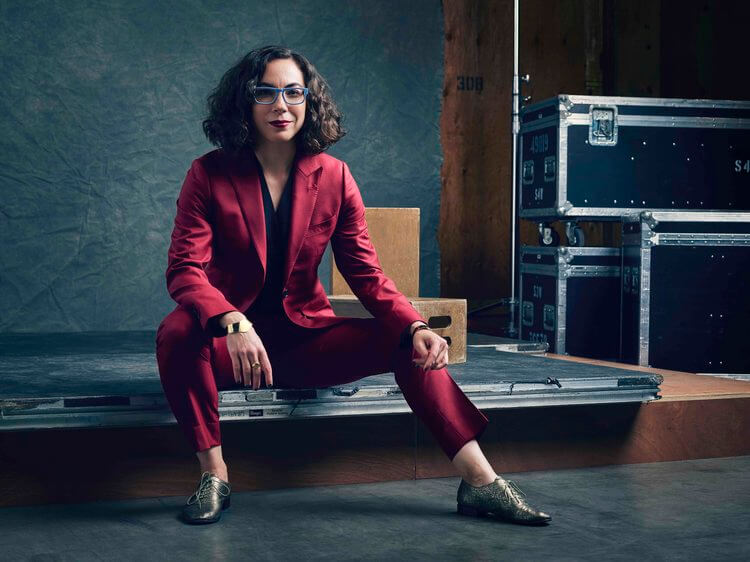
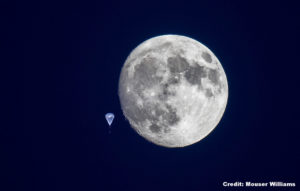
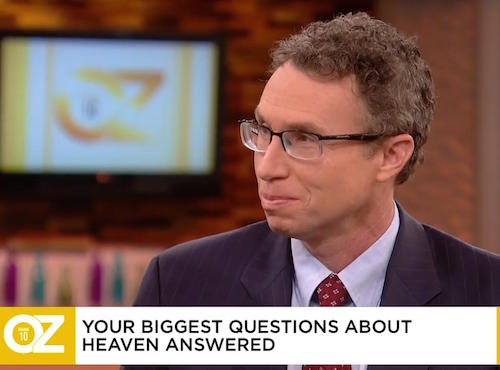
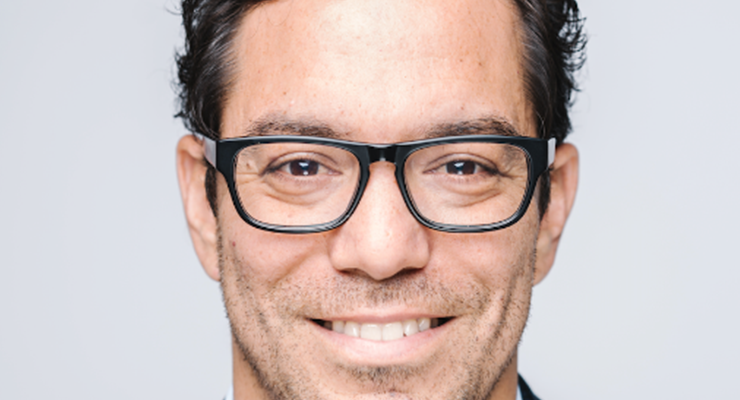
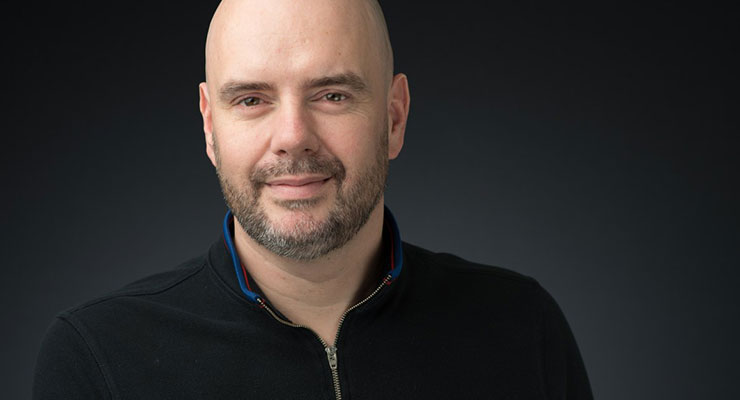
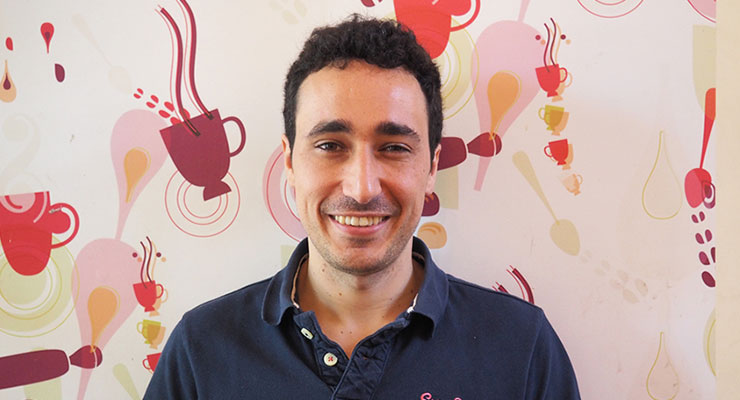
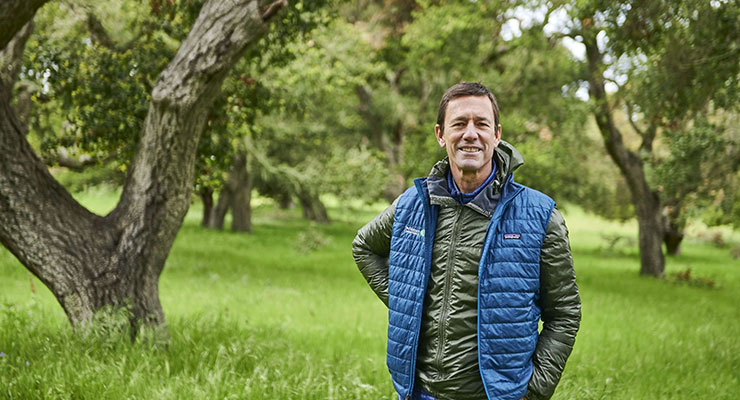
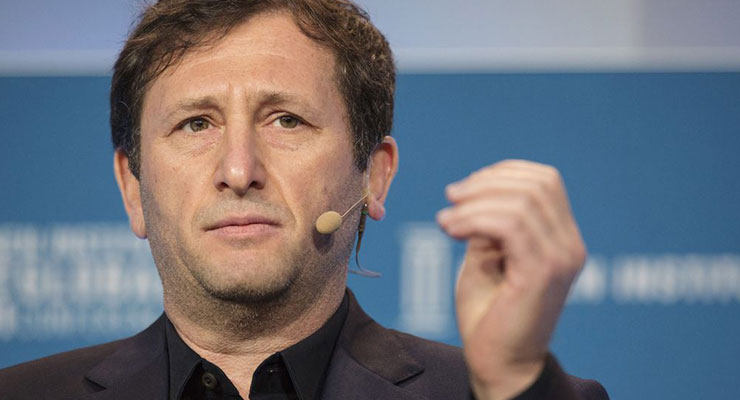
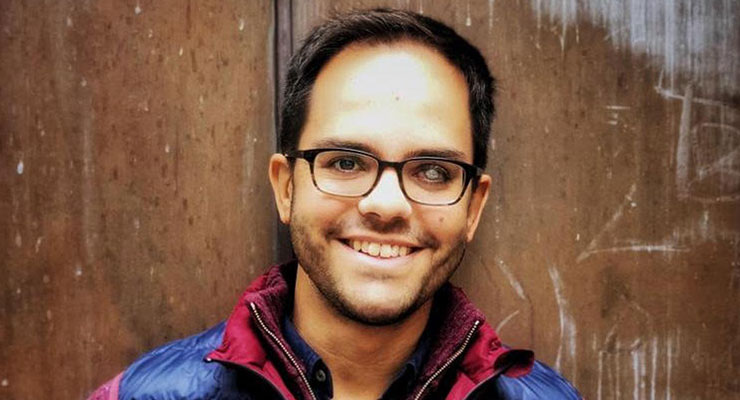
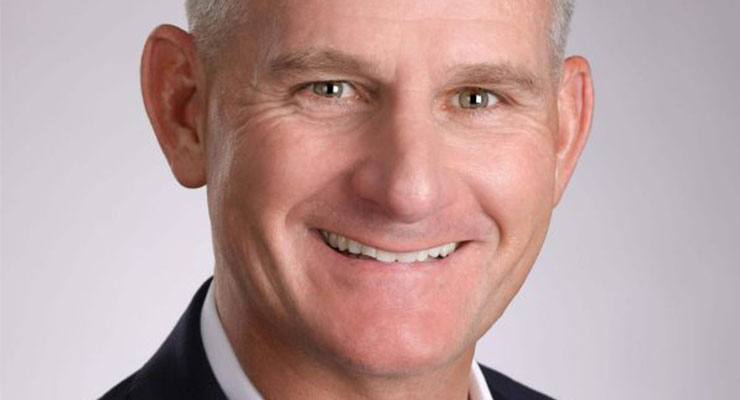
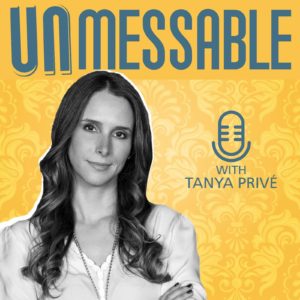 Unmessable podcast explores what it takes to be a great leader via candid discussions with success business operators and renown thought leaders.
Unmessable podcast explores what it takes to be a great leader via candid discussions with success business operators and renown thought leaders.